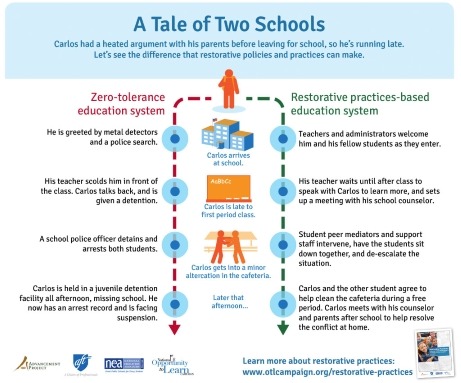Statistics from Philadelphia, with an excellent infograph. Each state is different, of course. But the pattern is similar in all but a few states — most notably Vermont and Maine.
A Curated Library of Useful Materials
Juvenile Justice
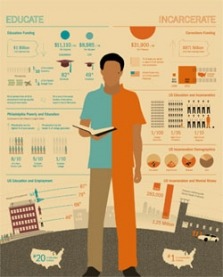
Education vs. Incarceration
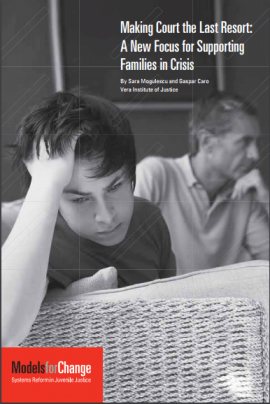
Making Court the Last Resort
Making Court the Last Resort: A New Focus for Supporting Families in Crisis: The always-excellent Vera Institute looks at dealing with “wayward” status offenses and with families who are in distress because of problematic kids. This report focuses on how three states have reduced or eliminated detention for kids who had seemed out of control.
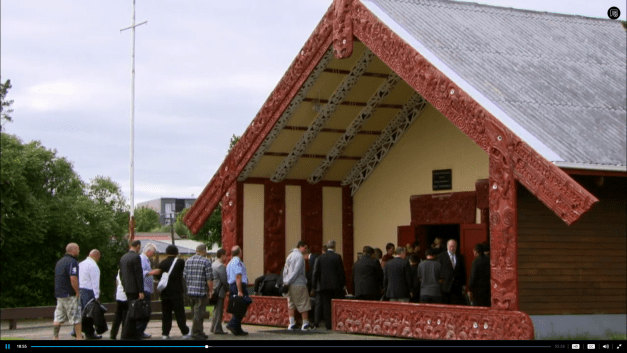
A History of Youth Justice in New Zealand
A History of Youth Justice in New Zealand: This paper is 30 pages, but a quick read. A good third of it is a review of how developed nations have thought about juvenile crime and welfare. Until the late 19th century young people were tried, imprisoned and treated the same as adults. Later, governments vacillated between a welfare/protective model and a justice/accountability model. In New Zealand, the Maori tribe had to fight their way onto study commissions trying to fix their counter-productive juvenile justice system. Like other aboriginal tribes around the globe, the Maori had much more effective ways of reintegrating youthful offenders into the community.
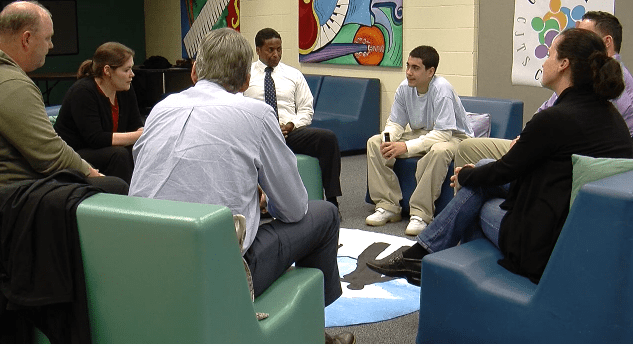
Connecticut Juvenile Training School - Community Circles
This video showcases people who’ve been affected by a 2-year initiative to use Restorative Justice — in particular the circle process — to change the culture of this juvenile detention facility, transforming a previously hot and dangerous environment into a place where people can work out their differences. The video includes reflections from both juvenile offenders and the staff that run the Connecticut Juvenile Training School, a remarkable experiment in Restorative Practices.
Recognizing / Dealing with Trauma
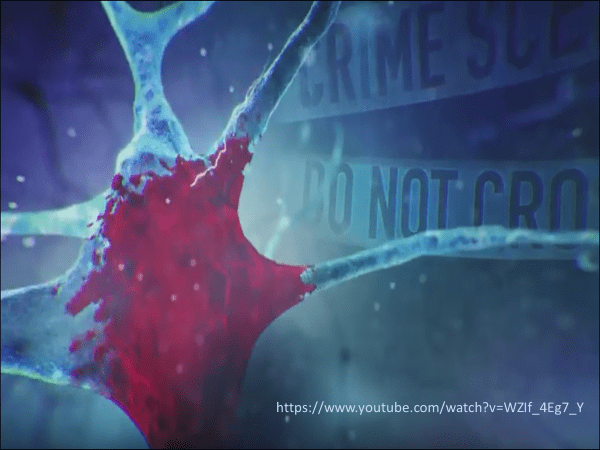
Science of Childhood Trauma
This one-minute video talks briefly about the effects of childhood trauma on the brain. It visualizes the affected synapses, but has a hopeful message about being able to make changes even when damage has occurred.
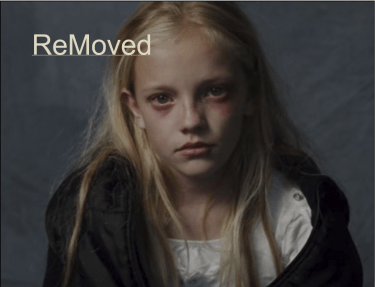
ReMoved
In just under 13 minutes, ReMoved tells the story of a girl living in an abusive home. Social services removes her from the home along with her brother, from whom she’s separated. The video illustrates the effects of trauma on behavior, including how triggers become established and how random and easily tripped those triggers can be. The video is widely used by foster and adoption agencies to help parents understand trauma.
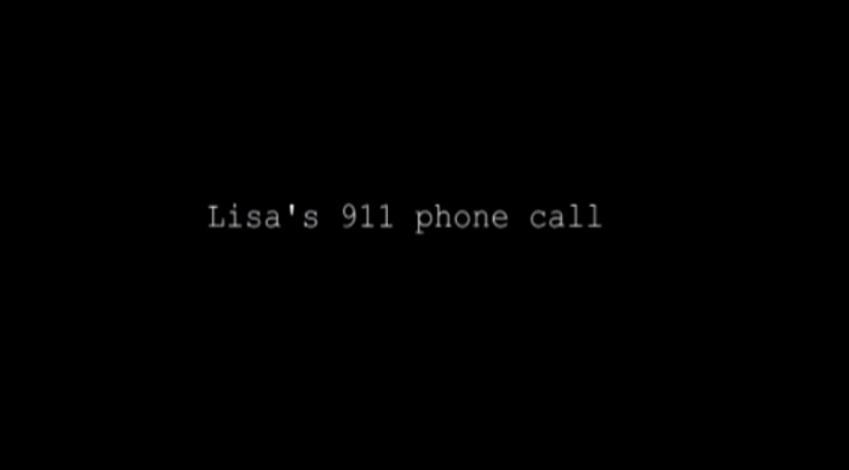
Lisa's 911 phone call
Lisa 911. Trigger alert!! This audio clip is quite upsetting. It’s a real 911 call from a child desperate to get help because her parents are fighting violently. You can hear them in the background of the call. It’s a powerful documentation of trauma in the making. Remember that things similarly traumatic happen to kids all the time, especially urban kids.
Restorative Justice in Schools
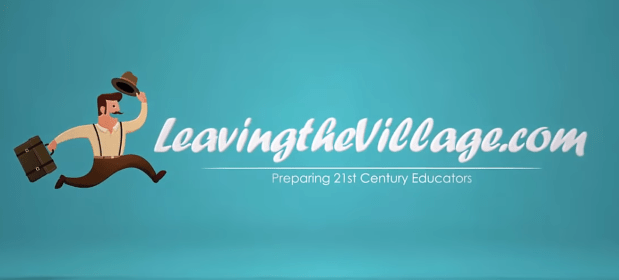
Why We Need Restorative Discipline in Schools
This 20-minute video is a mini-course in Restorative Justice for teachers. It has points for viewers to pause and talk about questions raised in the video. Just before the 2-minute mark is an animated section on the school-to-prison pipeline, engaging and full of statistics. Later there’s a section on getting underneath unwanted behavior to find out what’s going on. It doesn’t only show kids and their dilemmas, but adults as well. This could be a useful introduction to RJP in schools.
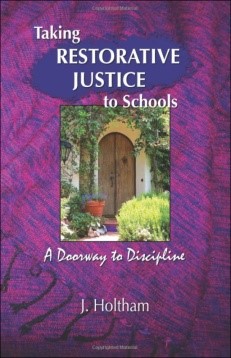
Taking Restorative Justice to Schools: A Doorway to Discipline
This short book has many stories illustrating the use of Restorative Justice in schools. There are several such books, but we think this one is the most useful and compelling.
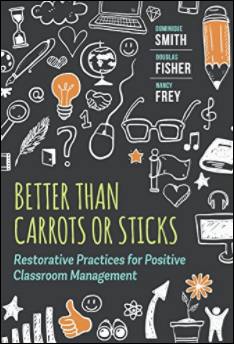
Better than Carrots or Sticks
Another short book, with an opening chapter that introduces the world of Restoration and argues persuasively for its implementation in schools. Interestingly, what follows after that are not a series of new tricks of the trade, but a compendium of well-known best practices for classroom management, interpreted through a restorative lens.
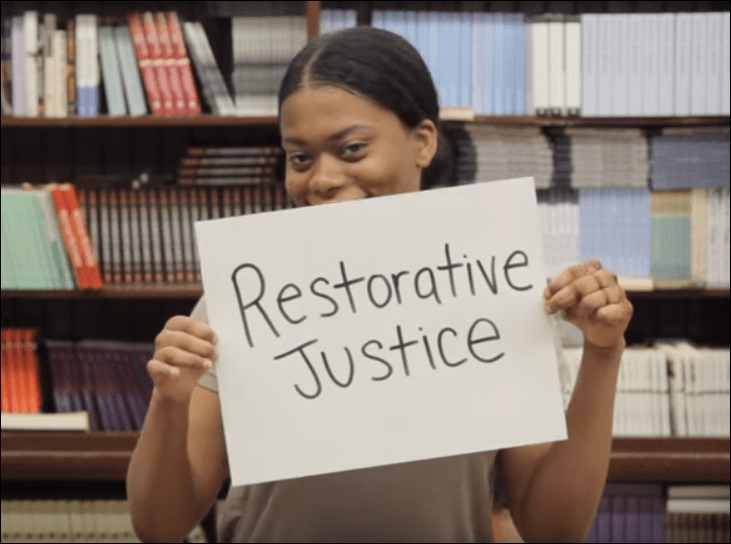
Invest in Schools, Not Police
TeachersUniteNYC made this video to advocate for implementing RJ in the New York City schools, but also to appeal for adequate resources and training to make it work. Their strategy is to take a light-hearted look at what RJ is and is not. Under 5 minutes.
A Tale of Two Schools
A nice infographic from The Schott Foundation’s Restorative Practices Guide. Click on the image for the full-size graphic.
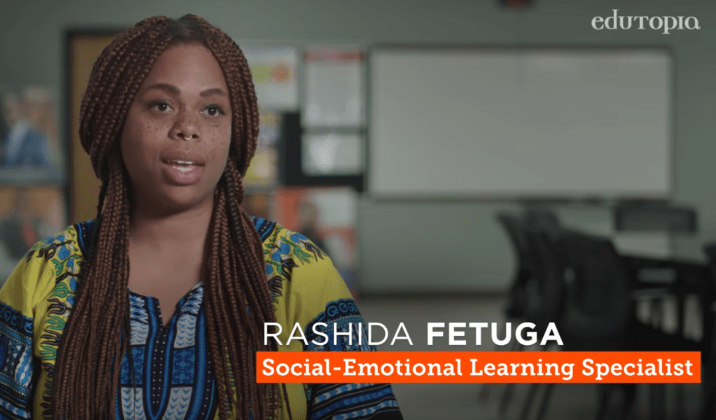
Restorative Circles: Creating a Safe Environment for Students to Reflect
Pearl-Cohn High School in Nashville made this video to show how they use circles and restorative accountability in what they call the “Zone,” similar to what YRP calls “Social Skills Restoration.” The “Zone” meets at 7:00am before school, giving them plenty of time to process the misbehavior that got these kids in trouble. (They don’t say how they get the kids into school so early.) One student says, “To succeed, young people have to be given space to grow and okay, I made a mistake, but from this learning experience I can continue to get better.” The goal is to teach and model community-appropriate expectations and social-emotional skills.
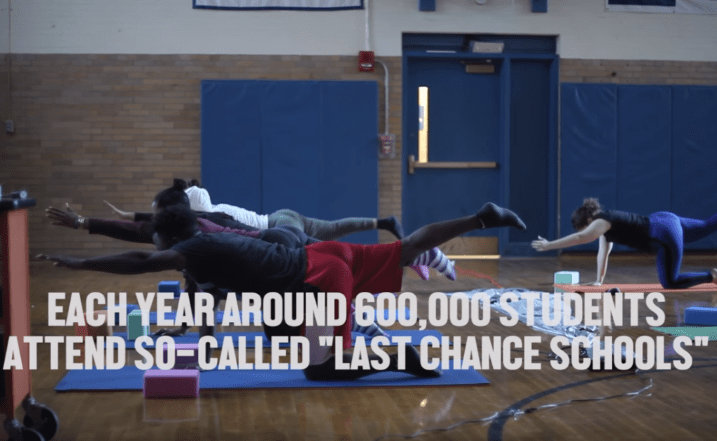
Best Ideas from Last-Chance High Schools are Reforming American Education
This is a well-made video of an alternative school in Boston that uses Restorative Practices. The video doesn’t discuss this, but usually kids can get into such schools with an IEP (Individual Education Plan) for behavior issues or for chronic truancy. Others are “last chance” drop-outs who want to go back to school, for whom the district somehow found extra funding. They get smaller classes, more resources and plenty of adults to talk to for help in sorting out their difficult home lives. It’s a good piece, but it fails to mention that every kid deserves what these “last chance” kids are getting.
Incarceration
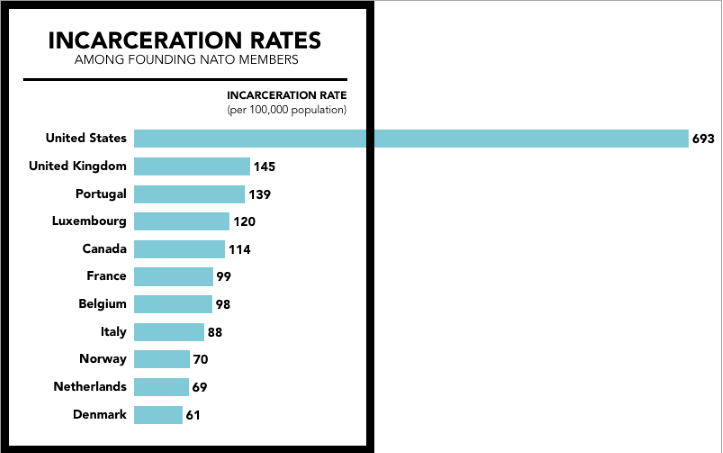
International Incarceration as compared with US
The U.S. per capita rate of incarceration is five times higher than most countries in the world. This graph compares the rate in each U.S. state with that in other nations. You need to scroll down 36 U.S. states before getting to Cuba. After a few more, you’ll find Rwanda, Russia and El Salvador.
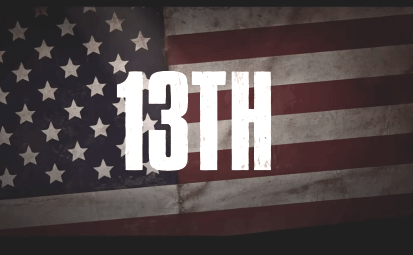
The 13th Amendment
Click here or for the trailer for Ava DuVernay’s extraordinary documentary “13th“. The full movie is here. The 13th Amendment to the US Constitution reads “Neither slavery nor involuntary servitude, except as a punishment for crime whereof the party shall have been duly convicted, shall exist within the United States.” The progression from that qualifying clause to the horrors of mass criminalization and the sprawling American prison industry is laid out by DuVernay with bracing lucidity. Combining archival footage with testimony from activists, politicians, historians and former inmates, DuVernay’s work is a grand historical synthesis.
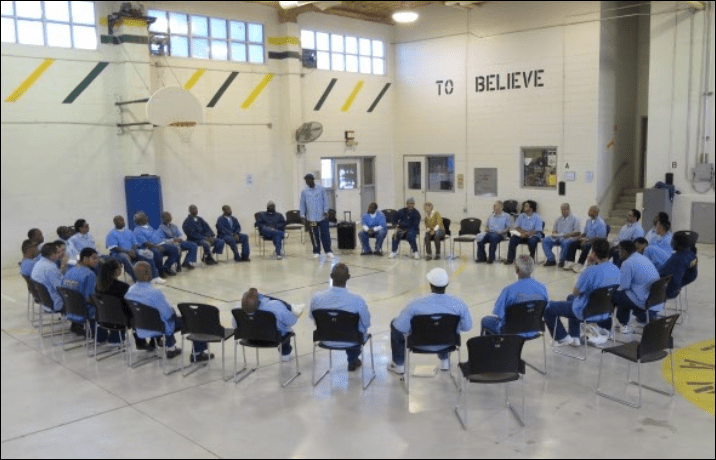
Healing and Accountability in the Criminal Justice System
This essay on Restorative Justice Processes in the Workplace describes the troubled, angry prison environment in which author Kay Pranis and her colleagues introduced healing circles. In time the staff set up a Conflict Response Initiative, allowing anyone in the prison to call a circle to deal with issues.
“The more we didn’t care about them (inmates), the more we didn’t care about each other.” — Corrections Officer, Minnesota Department of Corrections
Photo credit: Jo Bauen
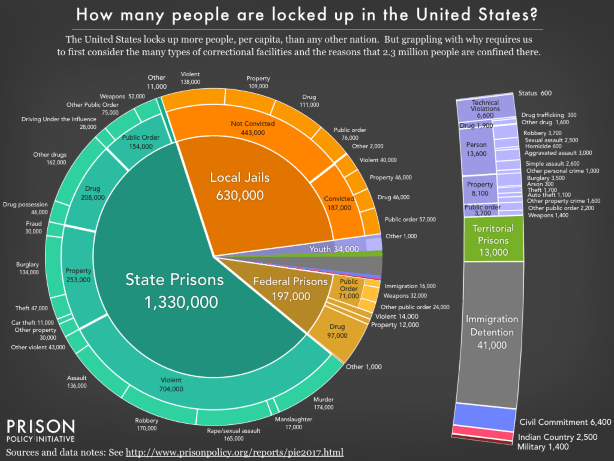
Mass Incarceration: The Whole Pie 2017
PPI, the Prison Policy Initiative, has many reports, most with good graphics and data. This report shows you who is being incarcerated and where.
“Wait, does the United States have 1.3 million or more than 2 million people in prison? Are most people in state and federal prisons locked up for drug offenses? Frustrating questions like these abound because our systems of confinement are so fragmented and controlled by various entities.”
Restorative Conferencing
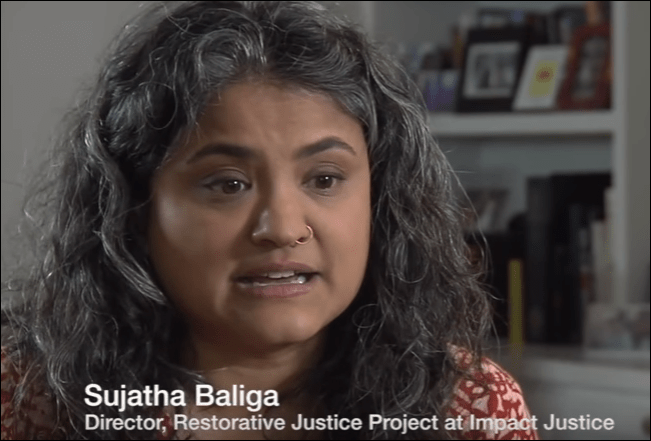
An Example of Restorative Justice with Sujatha Baliga
Sujatha Baliga tells a 5-minute story about conferencing a car theft. The victim was very reluctant at first, wanting revenge, but then figured she might get more satisfaction if she could express her anger directly. (This is why well-trained facilitators are essential to RJP’s success.)
Likely Baliga wanted to tell this story both because the conference was unusually successful, and because what the victim ultimately wanted is this side of funny.
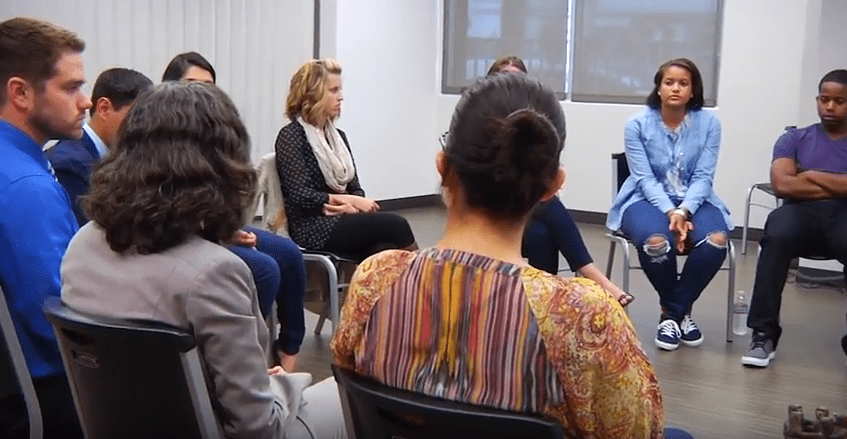
Video of a Restorative Conference
This video shows us a real, not staged, restorative conference. Edited down to about a half hour, the actual conference probably took about two hours. Still, you can see the basic format and the emotions that well up.
International Initiatives
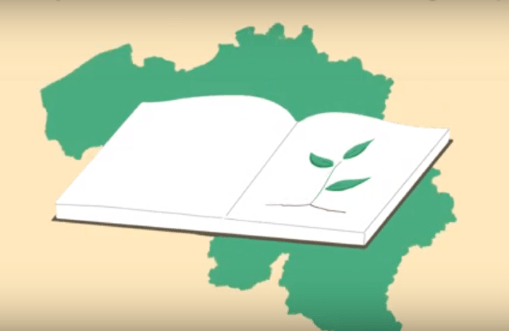
Protection System and Restorative Justice: The Belgian Experience
“This video presents the Belgian juvenile justice system briefly and explains how restorative justice is used and when it can be used. It explains more specifically how a mediation process works.”
Belgium is one of the many countries which has integrated RJ throughout their juvenile justice system. (The public’s feelings about adult crimes are always more complex and frankly, harsher.) Courts are still key, but often the Restorative process leads to better and more satisfying solutions for the victims. The narrator translates the testimonials of victims, offenders, and relevant parties who talk about their experiences with the system.
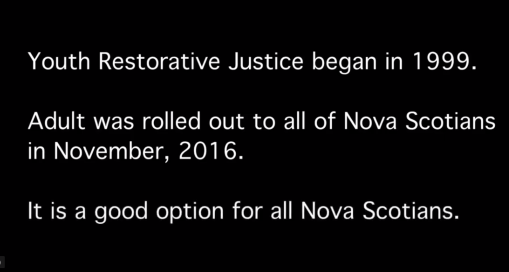
Restorative Justice: Nova Scotia
This video explains how Restorative Justice functions through the real story of a house break-in when the couple was on vacation. When the young female offender was apprehended, victims and offender worked together to sort things out themselves. The people involved tell their experiences of going through the process and how they felt it turned out. A teary and grateful offender talks briefly about building a relationship with the woman she had robbed.

